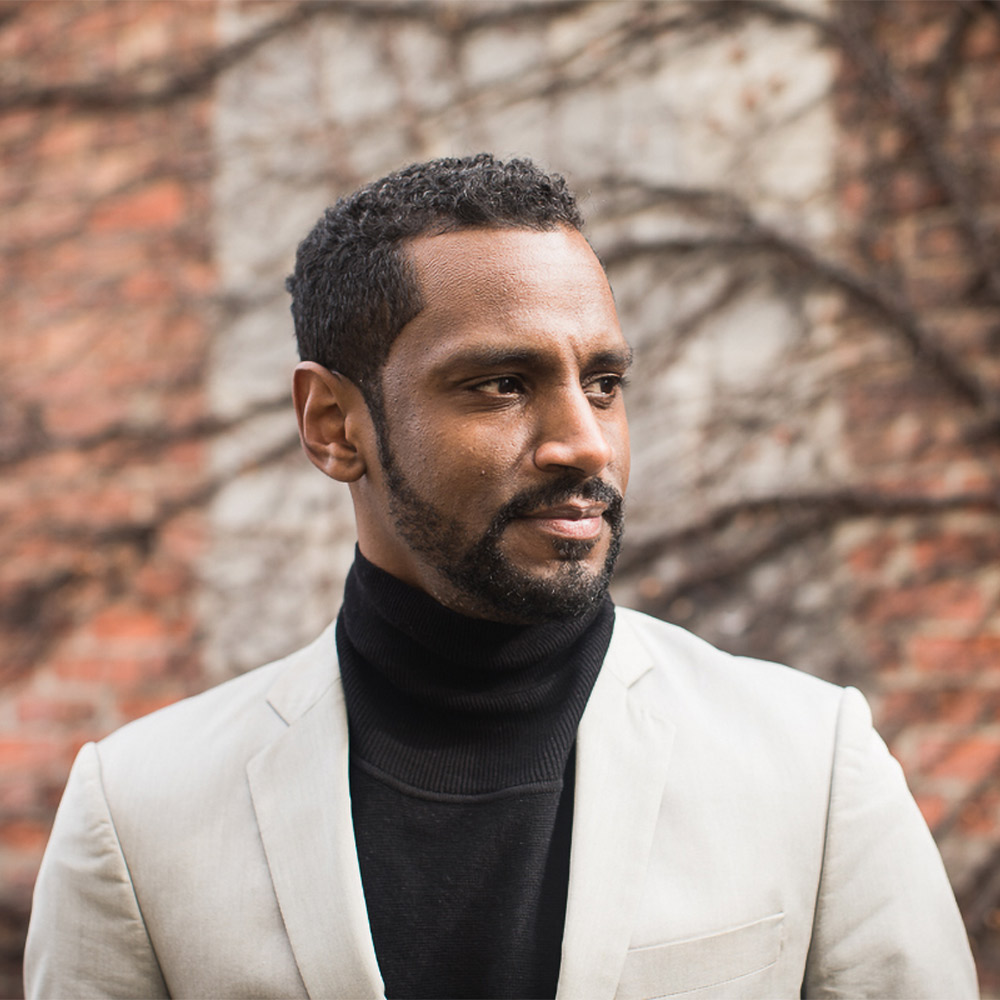
On his Navona Recordings debut, composer Carlos Simon masterfully combines influences from jazz, gospel, and neoromanticism. MY ANCESTOR’S GIFT incorporates spoken word and historic recordings to craft a multifaceted program of musical works that are inspired as much by the past as they are the present.
Today, Carlos is our next featured artist in “The Inside Story,” a blog series exploring the inner workings and personalities of our artists. Read on to learn about Carlos’s musical upbringing in the church…
When did you realize that you wanted to be an artist/ composer/creator?
My father began pastoring a small congregation church in Atlanta in 1996. It was so small that there was no one to play piano on Sundays. At age 10, my parents enlisted me to play on Sundays and I began taking lessons. My teacher taught me how to learn songs “by ear” which is learning the music simply by listening and identifying chords and melodies. It was an unorthodox way of teaching because most teachers start with reading and technique, but looking back, this type of training helped me to hear and listen to music differently from other musicians. It wasn’t long after that I started writing and teaching songs to the congregation. My early influences to music is linked to my family’s involvement in church.
Who were your first favorite artists growing up?
I loved gospel choir music! Unfortunately, that was the only type of music that we could listen to as children of a preacher. I studied groups like James Hall and Worship and Praise, Hezekiah Walker, Edwin and Walter Hawkins. It wasn’t until later that I started sneaking to listening R&B, musical theater and some classical music.
If you could do any job in the world and make a living at it, what would that be?
A full-time composer.
What was your favorite musical moment on the album?
I love the interludes that setup each piece on the album. I’ve spent so much time on writing the music and capturing it that it becomes easy to forget why I wrote each piece. I wanted the interludes to help prepare listeners for what they’re about to hear. I sat down with my friend and colleague, Rev. Quantez Pressley, and just had a candid conversation about issues that African-Americans face in today’s society and how it has evolved. The end result is what we hear on the album. We, unfortunately, left a lot of great conversation on the “cutting room floor,” but I still get goosebumps every time that I hear them.
Was there a piece on your album that you found more difficult to compose than the others?
White Only. Colored Only was probably the hardest to compose. I really had to filter through the emotions of anger and sadness that would ensue when I thought of how racism and discrimination was a lawful entity that was encouraged by leaders like George Wallace. I heard Governor Wallace’s speech when he declared “segregation now, segregation tomorrow and segregation forever” via YouTube and felt so many awful emotions. The piece uses a small jazz ensemble to show the anger and frustration that people must have felt coupled with portions of Wallace’s inaugural speech as governor of Alabama at the time.
Is there a specific feeling you want listeners to tune into when hearing your work?
As Rev. Quantez Pressley says on the album, “When we think of changing the world, we tend think of changing the world on a global scale, but the world is in the neighbor we see everyday.” I really want people to think and understand that we can “change the world,” but it has to be on a local stage first. I want this album to hopefully begin conversations and invoke action for better.

Carlos Simon is a versatile composer and arranger who combines the influences of jazz, gospel, and neo- romanticism.

